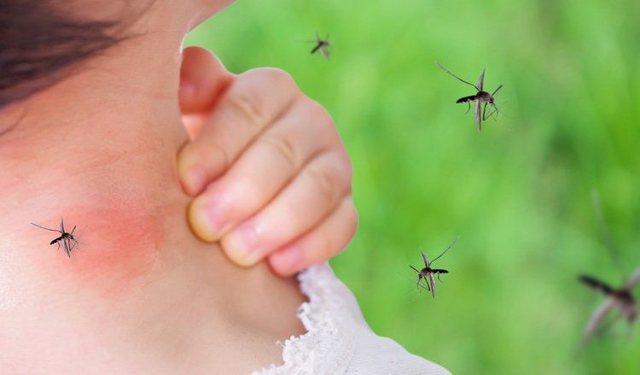Prej disa javësh, përveç vendeve të Europës dhe rajonit, edhe në Shqipëri po qarkullon virusi i “Etheve të Nilit Perëndimor”.
Sipas mjekëve virusi transmetohet te njeriu nëpërmjet pickimit të mushkonjave të infektuara. Mushkonjat e marrin virusin nga gjaku i zogjve të infektuar me këtë virus. Zogjtë janë dhe mbartës të virusit. Teksa nuk ndodh transmetimi i infeksionit mes njerëzve.
Në Shqipëri, sipas të dhënave zyrtare nga Instituti i Shëndetit Publik, u raportua se në 5 Gusht janë shënuar 3 raste me humbje dhe janë 17 të infektuar. Ndërsa dyshohet për 12 raste të tjera.
Sipas mjekut epidemiolog Ilir Alimehmeti, në vend mund të jenë të infektuar rreth 3 mijë persona. Sipas tij virusi shfaq sëmundjet e rënda të meningjit dhe encefalit vetëm në 1% të rasteve të prekur, ndërsa shkalla e fatalitetit është 0,1% për 1 mijë raste.
Epidemiologu i njohur Alimehmeti shton se situata nuk është shqetësuese, përderisa nuk ndodh transmetimi i virusit nga njeriu te njeriu dhe në 80% të rasteve nuk shfaqin simptoma.
“Në 80% të rasteve prekja është pa simptoma. Në 20% të rasteve shkakton temperaturë, dhimbje koke, të vjella apo dobësi muskulore. Nuk ka terapi specifike për këtë virusi. Në rast të shfaqjes të këtyre simptomave, pacientëve iu rekomandohet të qëndrojnë në shtëpi dhe të përdorin medikamentet për uljen e temperaturës.
Vetëm në 1% të rasteve mundet të manifestohet me prekje të sistemit nervor qendror, si encefaliti dhe meningjit. Për këto raste bëhet shtrimi në spital. Për pacientin menjëherë është i nevojshëm hospitalizimi.
Ndërsa fatalitetit janë shumë të rralla sa 0,1% në 1,000 raste të prekura nga infeksioni. Pra çka do të thotë 1 humbje jetë për 1,000 të prekur. Në vend deri tani janë raportuar 3 raste me humbje jete çka do të thotë që numri i të prekurve nga virusi arrin deri në 3 mijë raste”, pohon ai.
Rasti i parë në botë më infeksion u izolua për herë të parë në zonën e Nilit Perëndimor në Uganda në vitin 1937, nga ku mori edhe emrin.
Mjeku Alimehmeti thotë se rastet e prekura nga infeksioni si në vendet e Europës edhe në Shqipëri kanë qenë prezentë në dekadën e fundit mbështetur edhe te të dhënat e raportuara nga ESDC (European Centre for Disease Prevention and Control).
“Shpërthimet epidemike te njerëzit nga infeksioni i “Etheve të Nilit” kanë qenë prezentë në dekadën e fundit në Europë, përfshirë edhe Shqipërinë. Sivjet ka rritje të infektimeve rreth 35% më shumë në Europë dhe rajon krahasuar me vjet. Pse sivjet ka shtim të rasteve? Një ndër arsyet mund të jetë se po bëhen më shumë testime”, pohon ai.
Më 30 qershori 2023, ESDC raportoi se në vendet e Bashkimit Europian u shënuan 1,133 raste njerëzore të prekura nga virusi i Nilit Perëndimor, duke përfshirë edhe 92 raste me vdekje.
Më pas më 6 dhjetor 2023, u raportuan 707 raste të infeksionit Ethet e Nilit Perëndimor në vendet e BE-së, si: në Itali (336), Greqi (162, nga të cilat 1 rast me vend të panjohur infeksioni), Rumani (103 ), Franca (43), Hungaria (29), Spanja (17), Gjermania (6), Kroacia (6) dhe Qiproja (5).
Në këtë periudhë janë raportuar 67 vdekje në Itali (29), Greqi (23), Rumani (12) dhe Spanjë (3). Vendet fqinje me BE-në kanë raportuar 93 raste me prekje të infeksionit ku 91 raste u shënuan në Serbi dhe 2 në Maqedoninë e Veriut. Në Serbi pati edhe 2 vdekje.
Në 10 shkurt 2022 në vendet e BE-së u raportuan 164 raste me virusin e Nilit Perëndimor (West Nil Virus) nga 159 raste që u shfaqën në të njëjtën periudhë në 2021. Për 2021 pati 10 vdekje.
A duhen të kryhen testet laboratorike për virusin Ethet e Nilit? Çfarë thonë mjekët
Duke qenë se nuk terapi specifike për kurimin e virusit, as vaksinë për njerëzit dhe për rastet e rënda nevojitet hospitalizimi për mjekun epidemiolog Ilir Alimehmeti nuk është e nevojshme që njerëzit të kryejnë testime.
“Kryerja e testimit nuk tregon asgjë për mua si mjek, pasi nuk ka një kurë specifike për virusin. Në 20% të rasteve që ky infeksion shfaq simptoma, si: dhimbje koke, të vjella apo dobësi muskulore, pacientëve iu rekomandohen të njëjtat këshilla dhe medikamente si në rastet e viruseve të tjera dhe të qëndrojnë të qetësohen në shtëpi. Mbi të gjitha virusi nuk transmetohet te njeriu kështu që nuk ka vend për shqetësim”.
Sakaq në klinikat private në vend ka nisur të ofrohet kryerja e testimeve për analizën e antikorpeve. Mjeku Vasil Llajo njëkohësisht dhe administratori i rrjetit të laboratorëve “Intermedica” tha se testet Laboratorike qe kryhen në këteë rast janë antikorpet IgM dhe IgG.
“Antikorpet IgM shfaqen 8 ditët e para pas prekjes nga virusi. Bëhen në gjak dhe në likidin cerebrospinal ( për të sëmurët që kanë prekje te sistemit nervor qendror).
Analiza e antikorpeve IgM është analiza e parë e cila kryhet të pacientët që kanë shfaqur simptoma. Vlen të theksohet se nëse pacienti nuk ka simptoma, nuk rekomandohet kryerja e këtyre testeve.
Prezenca pozitive e IgM ( IgM pozitiv) tregon se pacienti është i prekur nga virusi. Nëse prezenca e antikorpeve IgM del negative, kjo analizë përsëritet pas disa ditëve.
Gjithashtu bëhet dhe IgG , njëkohësisht me IgM . Kur të dyja janë pozitive tregon prekje të tanishme të organizmit nga ky virus. Prezenca vetëm e IgG ( IgG pozitiv) tregon një prekje më të hershme nga virusi, muaj ose vite me parë”, pohon ai.
Sipas tij periudha me e zakonshme e shfaqjes së kësaj patologjie lidhet me periudhën e shumëzimit dhe shfaqjes së mushkonjave dhe rekomandohet marrja e masave për luftën kundër tyre./MONITOR






